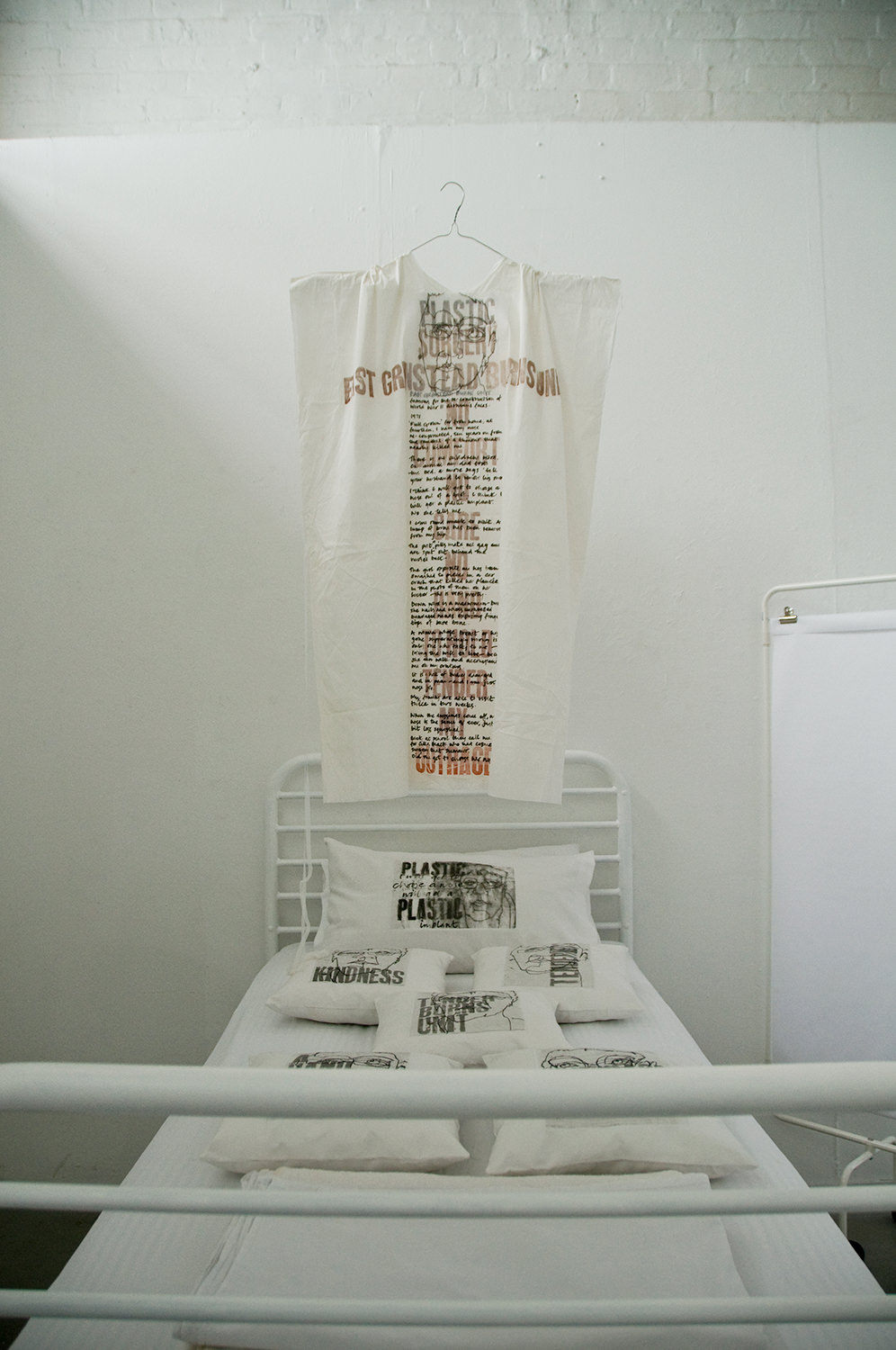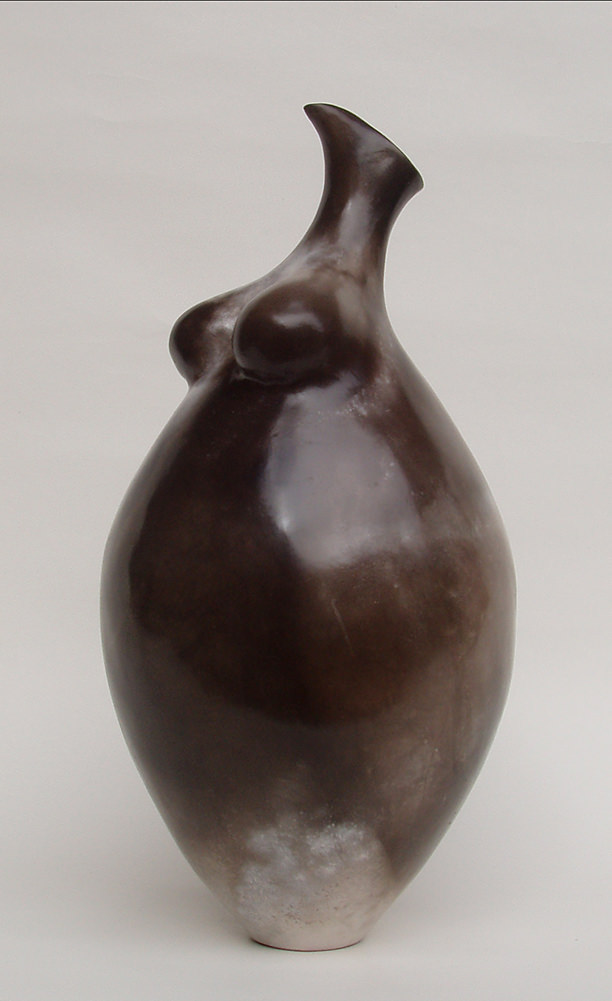At An Talla Solais, Ullapool, Feb 2010
Paper surgical gown | monoprints | calligraphy | handprint lettering | inkjet print | cotton | interfacing | machine stitching | borrowed bed
My work has often been about challenging the ways in which women have been portrayed in the history of art and currently are in the media. Objectification and idealisation of the female body continue to be troubling for most women.
At Bridgehouse Art, Ullapool in the winter of 2010, I had the opportunity to reflect on my work. I became aware of an element of idealisation in my own voluptuous vessels and decided I needed to work from life. A lack of other models led me to self-portraiture. This required compassion –since plenty of opportunity for self-criticism arises in studying one's own appearance.
A series of monoprints made me aware of my nose and from this emerged a piece of writing about my experience of plastic surgery. I realised how much this powerful event had shaped me. I wasn't sure what to do with the writing. The serendipity of finding a disposable surgical gown in a cupboard in the studio -–which was formerly a medical centre– encouraged me to 'trust the process' and look for ways to work visually with the words.
Eventually monoprint and handwritten text were applied to the gown. More words emerged as a response to the narrative and were printed using beautiful old wooden blocks. When the gown was finished three words were left complete from the printing: Tender Burns Unit. This immediately became a place in my imagination -–that had all that was missing from East 'Grimstead'. Words of comfort and protection as a cushion –as though I reached back forty years to care for my young self– creating an antidote to the trauma.
I was intrigued to discover that while I was engaged with this, children at Ullapool Primary School were decorating surgical gowns for children in India undergoing cleft palate operations. The decorated gowns -–as reported in the Ullapool News– 'makes them happy'.
At Patriothall Gallery, Edinburgh, June 2010
Paper surgical gown | monoprints | calligraphy | handprint lettering | inkjet print | cotton | interfacing | machine stitching | hospital screens with paper | bed fabricated from metal rails and timber |
charcoal drawing self-portrait
Writing
PLASTIC SURGERY
Queen Victoria Hospital
EAST GRINSTEAD BURNS UNIT
Famous for the re-construction of World War II airmen's faces
1971
'Full grown', far from home, at fourteen,
I have my nose reconstructed–
ten years on from the removal of a tumour that nearly killed me.
There is no children's ward.
On arrival, my Dad tests the bed, a nurse says
'tell your husband to remove his shoes'.
I think I will get to choose a nose out of a book
I think I will get a plastic implant.
No one tells me.
I come round unable to walk
A lump of bone has been removed from my hip.
The post-op pills make me gag
and are spat out behind the nurse's back.
The girl opposite me has been smashed to pieces
in a car crash that killed her fiancée.
In the photo of them on her locker -–she is very pretty.
Down ward is a madwoman –burnt,
she wails and waves unraveled bandaged hands
exposing fingertips of bare bone.
A woman whose breast op has gone supperatingly wrong
is the only one who talks to me –of losing the will to live–
because she can walk and accompanies me on my crutches.
It is a hell of bodies damaged and in pain
–and I am just a nose job.
My family are able to visit twice in two weeks.
When the dressings come off
My nose is the same as ever, just a bit less squashed.
Back at school they call me Cilla
–Cilla Black had cosmetic surgery that summer.
She got to choose her nose.
Photography by John McNaught & Ian Wetton











